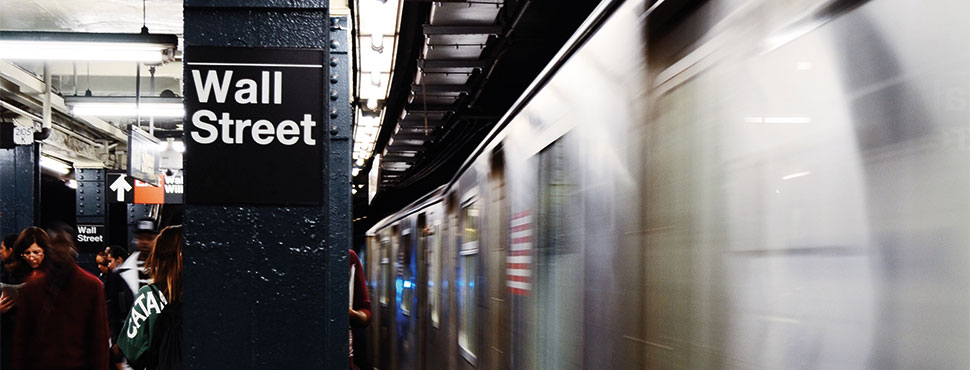The Third Age of Consumption will be defined by capacity challenges covering cognitive, economic and resource limits – in this new era, business opportunities will be found in Experiences, Relationships and Algorithms. Kantar Futures’ J. Walker Smith and Andrew Curry provide five strategies for understanding and exploiting the new marketplace dynamics

We have now entered the Third Age of Consumption, in which capacity is channeling the marketplace in new directions. Capacity does not have to be a limit or ceiling on progress, but it will be a regulator for consumers and businesses alike.
What are the Three Ages of Consumption?
The First Age of Consumption was associated with European merchant adventurers, and later nation-states, and runs from the 17th to the 19th centuries. It was a consumer world in which scarcity and luxury went hand in hand. For those who could afford them, expensive goods and commodities like coffee, tea, chocolate, tobacco and china plates elevated the quality of life and became markers of status.
The Second Age of Consumption began in the mid-19th century with the opening of department stores across Europe and the United States, marking the rise of a new market of middle-class consumers. New business techniques and models evolved including mass assembly, as pioneered by Henry Ford, the brand management system pioneered by Procter & Gamble and the strategy of planned obsolescence made popular by General Motors. Mass media and mass advertising arose to cater to the new consumer culture.
The Third Age of Consumption has been evolving for some time, but the definitive moment of change was the financial crisis of 2008, the moment when the worldwide credit boom that had shored up consumer spending during the last stages of the second age finally burst under the pressure.
This key component of economic capacity was breached, and along with it, floodgates of capacity were soon overtopped as well.
The Challenges of Capacity
The challenges of capacity take several forms. Cognitive capacity is strained by technology and the surfeit of information. Economic capacity is checked by deep-seated structural elements that are slowing long-term growth. Resources are fast approaching the boundaries of planetary capacity, which is being paralleled by a broader shift in environmental attitudes and lifestyle values.
New growth opportunities will abound, but in the new context of capacity. Understanding the different types of capacity and the ways of navigating them will be central to business success in the Third Age of Consumption.
It is also necessary for organisations to understand how consumers are increasingly responding to capacity challenges by taking up the mantra of Live Large – Carry Little. This is relocating value from accumulation, possession and ownership to Experiences, Relationships and Algorithms – a new E.R.A. for business.
Growth in the Capacity E.R.A.
In this new E.R.A., five key questions are front and centre for strategists, innovators and brand owners.
1. Does enough of your value proposition come from experiences, relationships and/or algorithms?
• If not, how do you build more? If so, how do you secure it?
You must benchmark and audit this, particularly relative to the vulnerability of your category. For example, Amazon doesn’t have to compete in your category to capture your customers and devalue your brand. All Amazon needs is algorithms driving shopping experiences that better align with cognitive and economic capacity and relationships.
2. Does your marketing successfully avoid the overall trend of consumers turning away from marketing channels?
• If not, what channel strategy is better? If so, will it last?
This goes beyond media economics. Reaching reluctant consumers is about mastering friction-free capacity, not better information, entertainment or planning. For example, research finds that consumers like advertising and find it valuable – even as they do everything they can to avoid it. The answer is not better advertising; it is better alignment with cognitive capacity.
3. Is your value proposition well positioned for an economy undergoing rapid changes and for consumers facing less job and wage stability?
• If not, how do you adjust? If so, will you stay competitive?
Social and cultural change is now so fast that fixed practices and reference points are now irrelevant. Fast-following and flexibility matter more now than experience and familiarity. For example, Hyundai USA responded to a 50 percent sales drop following the 2008 downturn by promising consumers that if they lost their job, they wouldn’t be stuck with a new car they couldn’t afford. This radically new messaging meant 2010 U.S. sales hit record levels.
4. Are you reaping competitive advantage through strategies to reduce the resource impact of your products and/or services?
• If not, how much are you at risk? If so, how can you do more?
Whatever politicians may say, the world is committed to sustainable development, which The Business Commission estimates will open up a minimum of $12 trillion in new market opportunities. Either you exploit this – or your competitors will. For example, Unilever has not just reduced its own water use in manufacturing; its products now help consumers reduce their own water use. More resource-friendly and more economical, this neatly ties together two aspects of capacity in a unique value proposition.
5. Do you have a clear view of the future of your categories, businesses and brands in the Third Age of Consumption?
• If not, how will you develop it? If so, how do you evolve and execute it?
One of the biggest barriers in responding to change is ensuring that the organisation is committed to a shared view or shared story of what is happening in the broader environment and what this implies for how the company must operate. Without this sort of alignment, growth and innovation initiatives almost always fizzle out and fail.
Originally posted Contagious 4 July 2017

